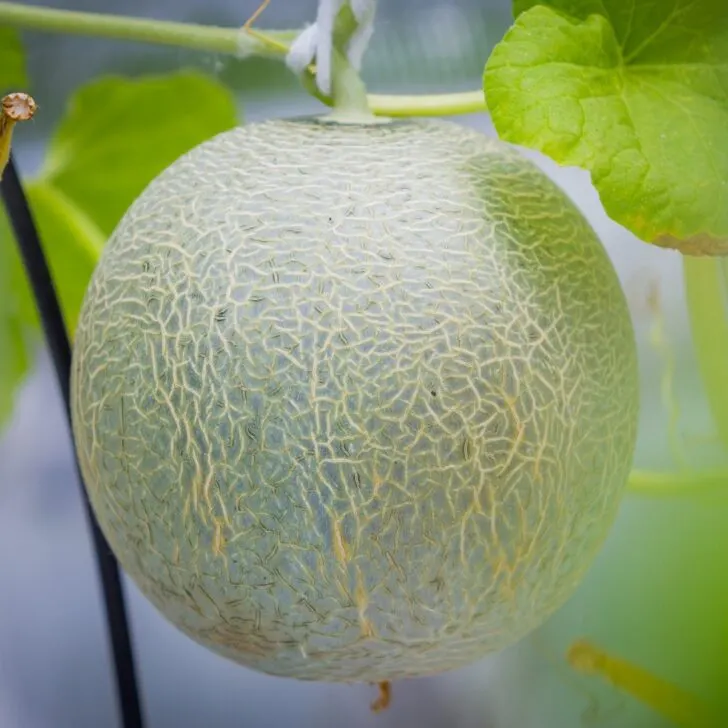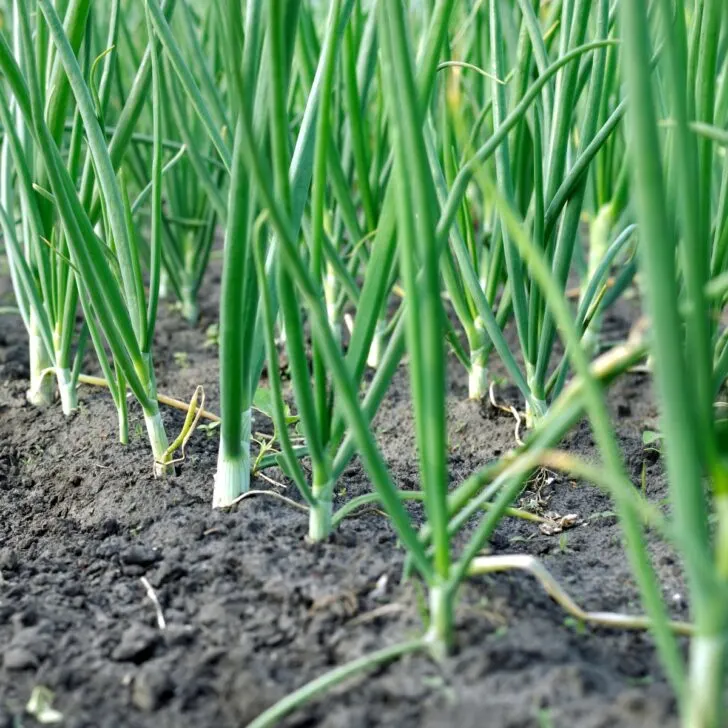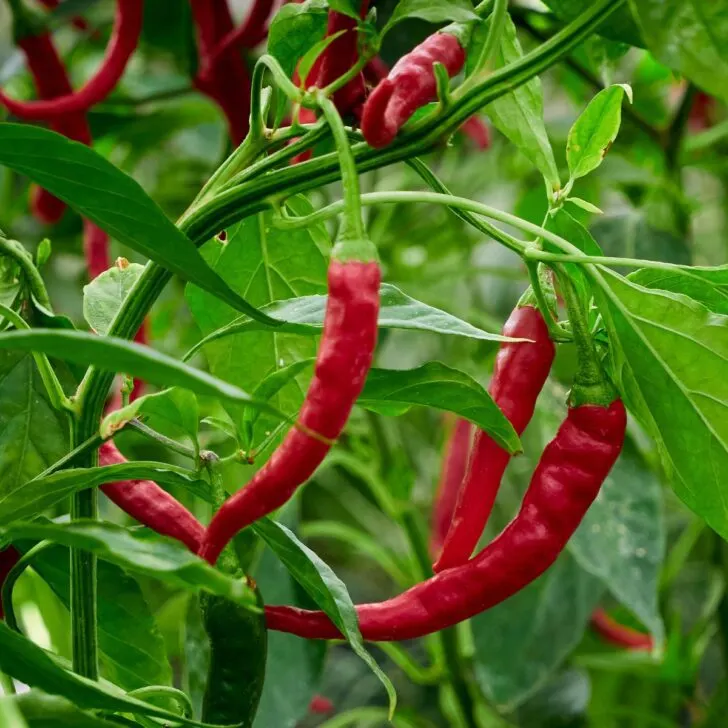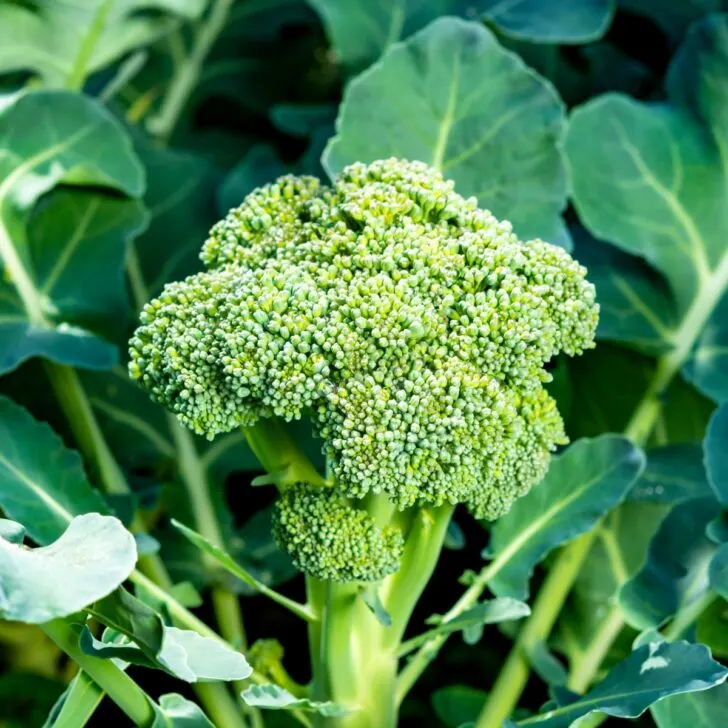Get the most out of your garden space by growing cucumbers in grow bags and training them to grow vertically on a trellis! Here's how!

Grow bags are a great way to garden without taking up a lot of space. These fabric sacks have plenty of benefits for your plants, and make it easy to move your crops around as sun levels change.
But what about vining plants like cucumbers? Don't they need a lot of room to spread out? Not if you grow them vertically!
In this article, I'll show you how I grow cucumbers in grow bags and train them on a single string. Even if you only have a small balcony, it's possible to enjoy the satisfaction of biting into a crunchy cucumber you grew yourself!
Let's get started!
This post contains affiliate links for your convenience. Purchases made through these links may earn me a small commission at no additional cost to you.
Gather your supplies
Here's what you'll need to grow cucumbers in grow bags:
Grow bags
Not all grow bags are created equal. Look for ones that are made from breathable fabric, not plastic. These bags will provide excellent drainage and allow for air pruning of the roots, which is one of the main benefits of grow bags.
A good size to start with would be around 7 to 10 gallons, but remember that the larger the bag, the larger the plant can grow! I'm using these 10 gallon grow bags for my cucumbers this year.
Cucumber plant
There are plenty of cucumber varieties to choose from. For growing in bags, compact or "bush" varieties can be a good choice. Varieties like "Bush Crop" or "Spacemaster" can be a great fit for containers.
I'm growing Sashimi cucumbers from seed, but I also picked up a Spacemaster cucumber from my local nursery, which you'll see in the photos below. I started the seeds a little late this year, so I'll let the seedlings get bigger before planting them in separate grow bags.
Potting soil
The soil you use in your grow bag should be light, fluffy, and rich in organic matter. Use a well-draining potting soil, not garden soil or seed starting mix. This will provide your cucumbers with the nutrients they need to grow and thrive.
Trellis
Cucumbers are vines, and they love to climb or sprawl on the ground. You'll need a sturdy trellis or cage to support their growth and the weight of all that produce!
A few years ago, I built this plant stand with an arbor across the top. It's perfect for growing vegetables like cucumbers and tomatoes on a string trellis tied to the slats above, and the wooden planter boxes on either side hide the grow bags from view.
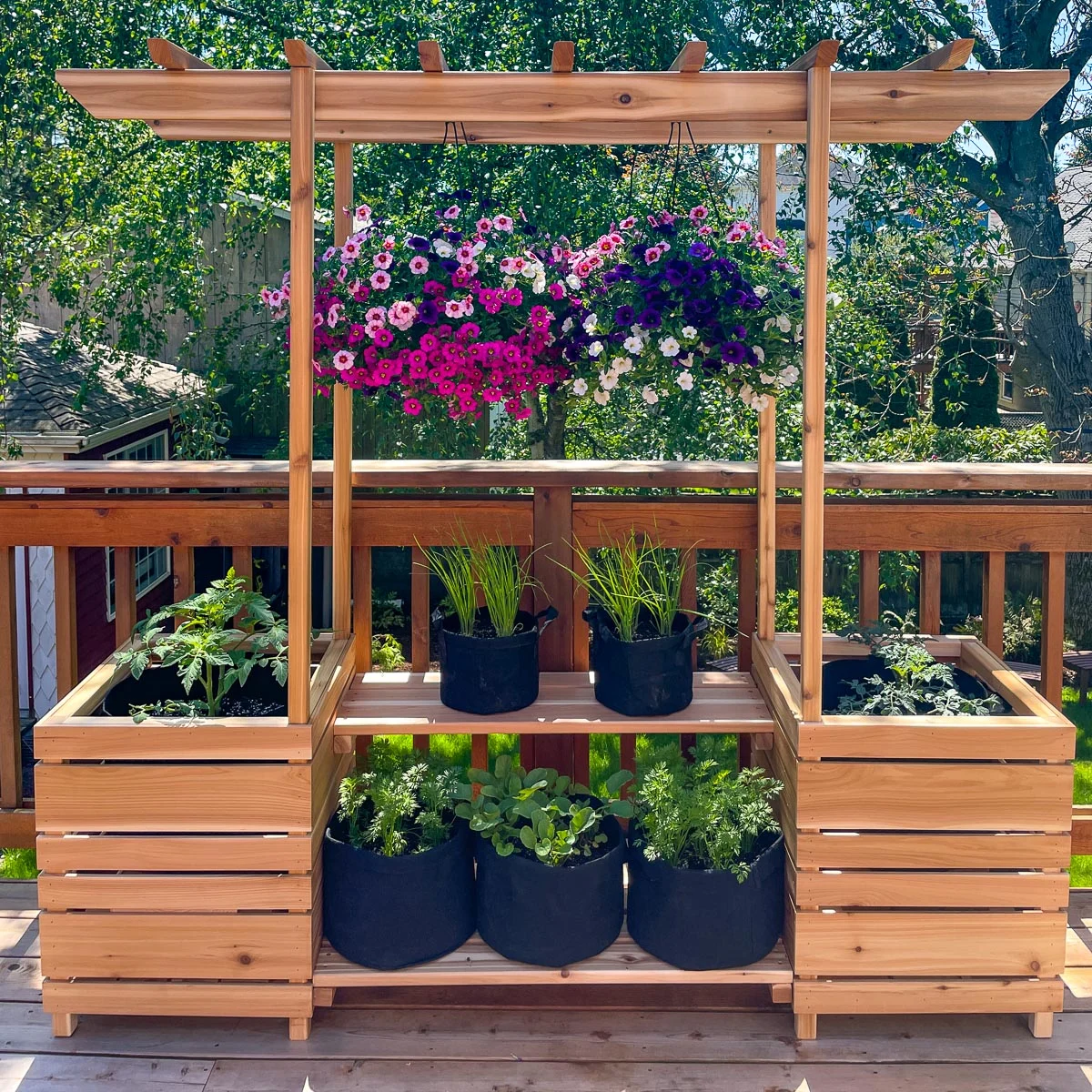
But you don't need something this fancy! Check out the video below for how to build a cucumber string trellis attached to a raised bed.
Planting cucumbers in grow bags
Decide on a location
Start by placing your grow bags in the desired location. You'll want an area that gets plenty of sunlight since cucumbers thrive in sunny conditions. Remember, once the bags are filled with soil, they can be quite heavy, so it's best to decide on the location beforehand.
Cucumbers need a good amount of space to grow properly, even the compact varieties. When planting, aim to leave about 18 to 24 inches of space between each plant.
This might mean only one plant per grow bag, but that's okay! This spacing allows the plants to receive ample sunlight and good air circulation, reducing the chance of disease.
Fill the grow bag with soil
Fill your grow bag with the potting mix until it's about 2 inches from the top edge, giving some space for watering. Make sure not to compact the soil. It should remain light and airy. I also sprinkle some Bio-Tone starter fertilizer throughout the soil to encourage root development.
Create a hole in the middle of soil for your plant. Mine is set off to one side a bit to avoid the shadow cast by the deck railing behind the plant stand. Test the width and depth with the nursery pot first to make sure it's big enough.
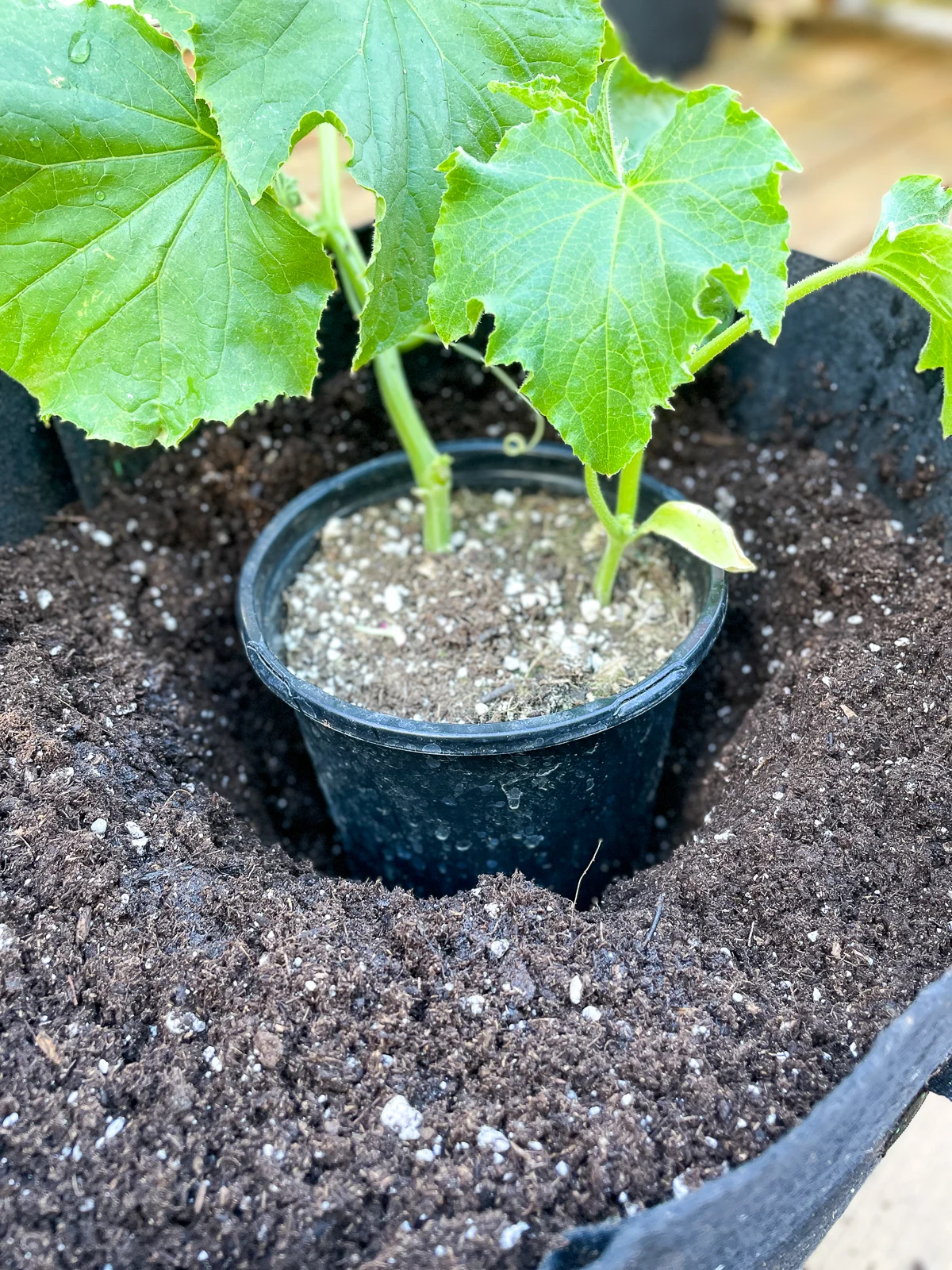
Plant the cucumber in the soil
Remove the plant from the pot and pop it into the hole. Then cover up the root ball with the surrounding soil, pressing firmly to remove any air pockets.
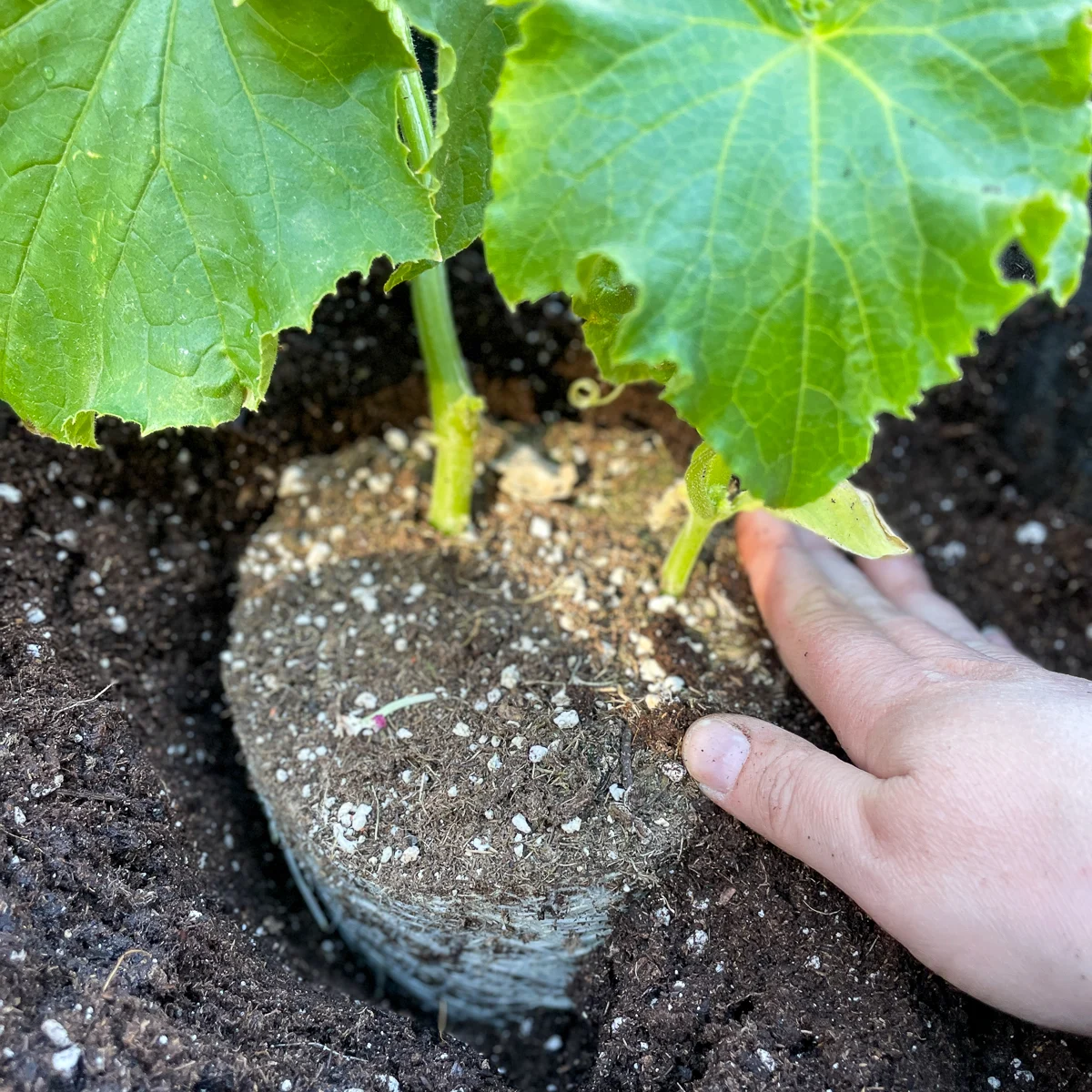
Caring for cucumbers in grow bags
Your cucumbers are now comfortably settled in their new home, but your job doesn't stop here. They need some love and care to grow into strong, healthy plants that bear lots of fresh produce.
Watering
Cucumbers are thirsty plants! Water your cucumbers generously, especially on hot and dry days. However, be careful not to waterlog the soil.
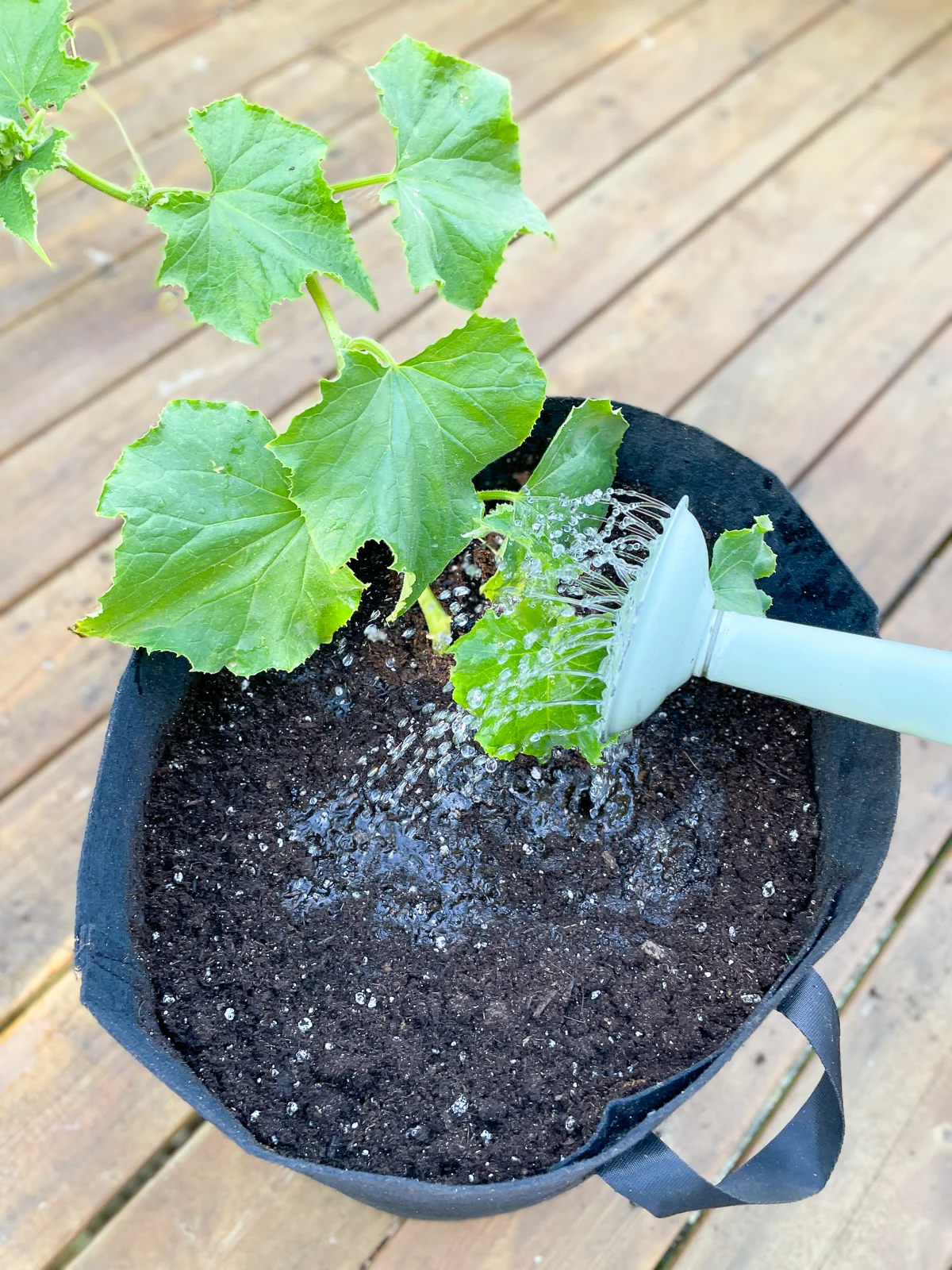
The beauty of grow bags is that they provide excellent drainage, so overwatering is less of a risk than with traditional pots. However, they also dry out faster. As a general rule, make sure the top inch of soil is dry before watering again.
The drip irrigation system for my deck plants runs every morning for 20 minutes. I have a ring of tubing with emitters every six inches around the base of the plant, which disperses the water more evenly than a single emitter.
Fertilizing
Even though we started with nutrient-rich soil, cucumbers are heavy feeders and may need a little extra help.
Apply a dose of nitrogen fertilizer to the soil after flowers appear and then three weeks later. However, be careful not to over-fertilize, or you'll get more foliage and less fruit.
Trellising
As your cucumber plants grow, gently guide them onto the trellis or cage. They will naturally start to climb, but it may need some help getting started. This vertical growth habit not only saves space, but it also helps increase air circulation around the plant, reducing the risk of disease.
I use a cucumber string trellis, which is really easy to set up. Just tie one end of the string to a landscape staple and press it into the soil next to the cucumber stem.
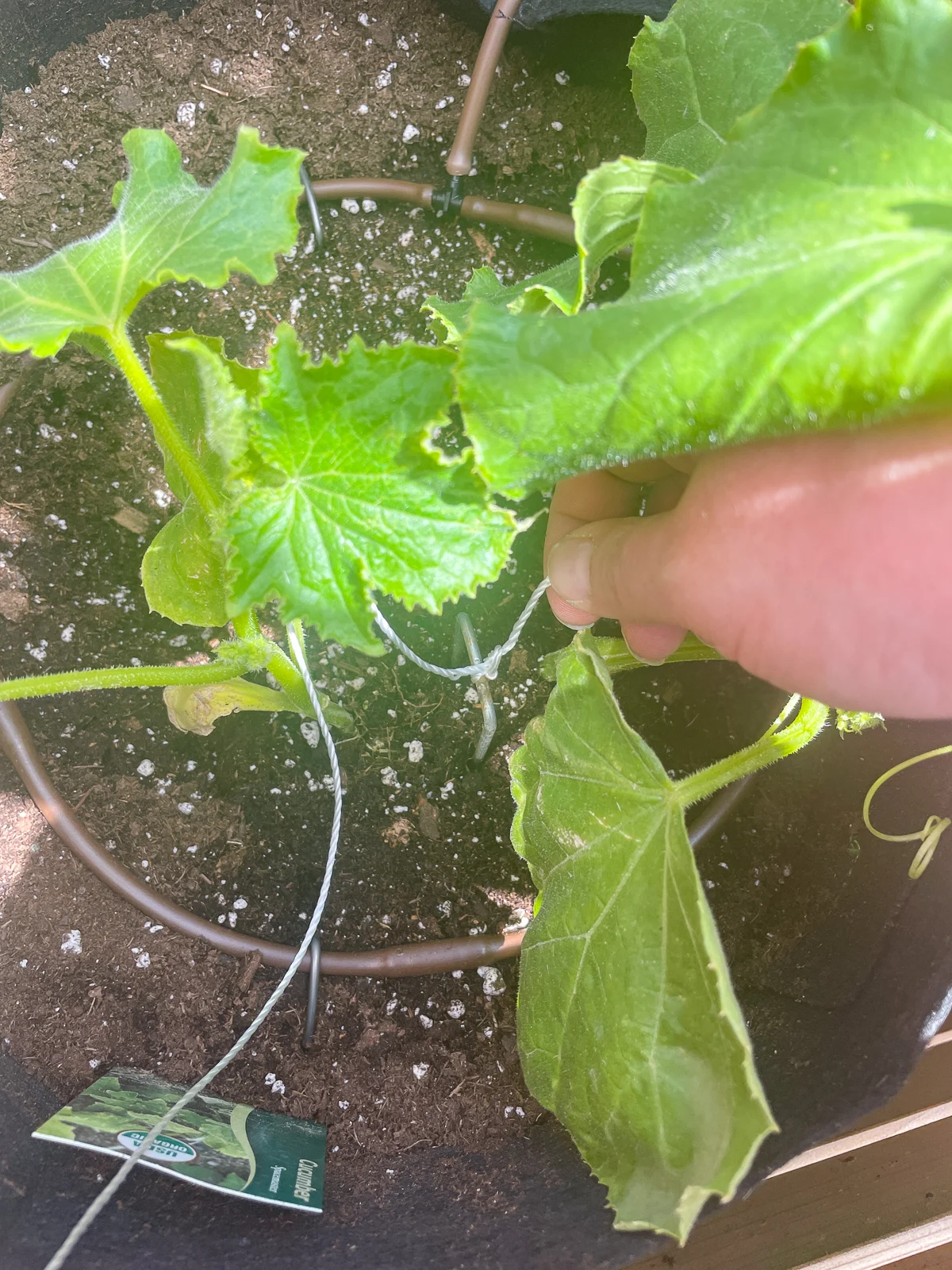
Stretch the string tight up to a top support, being careful not to pull out the landscape staple. Tie it directly over the plant.
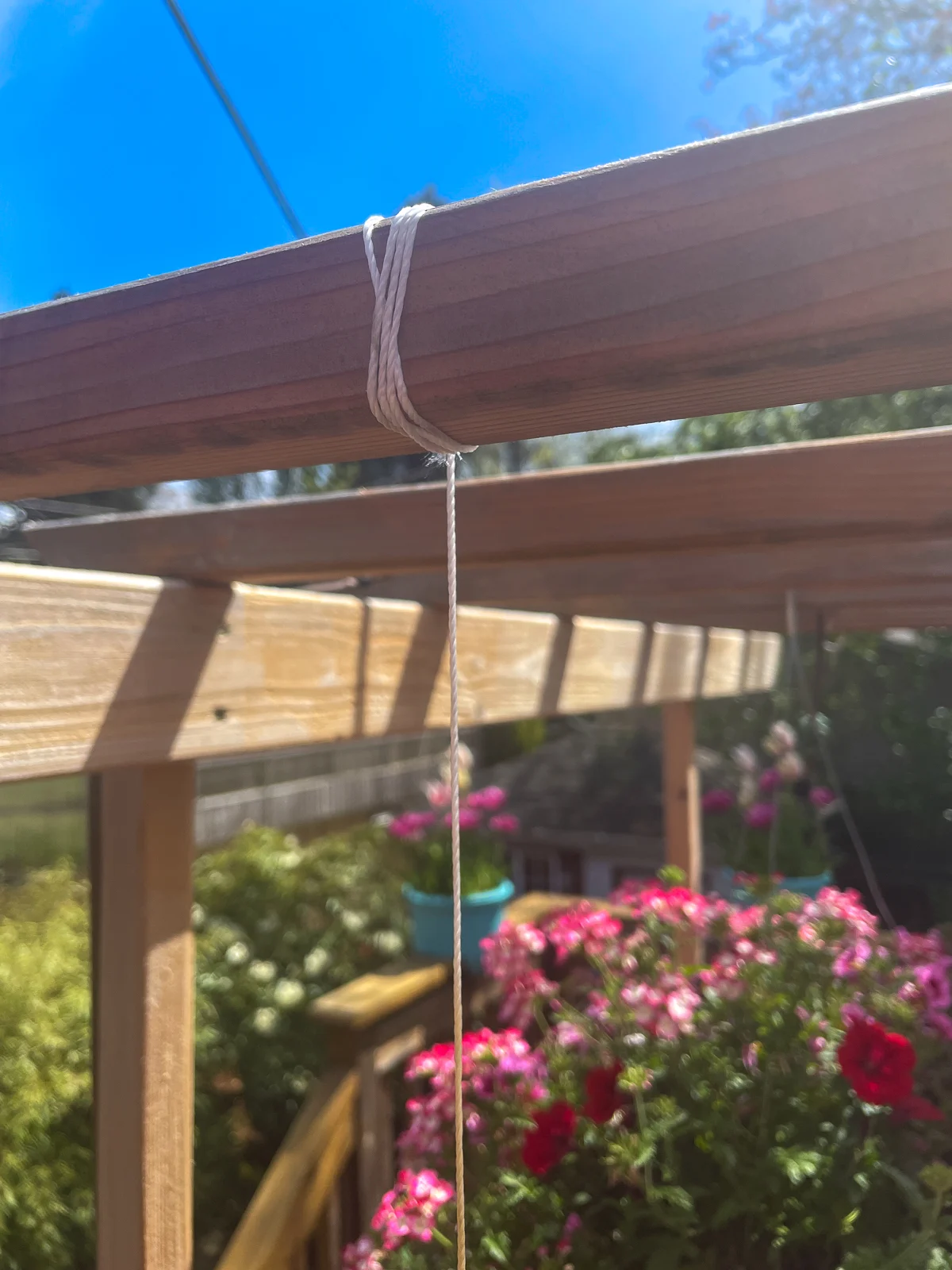
While the cucumber's tendrils will grab onto the string eventually, you may need to attach the vines to the trellis to guide it upward initially. I like these string trellis clips that hold the stem close to the twine, but allow it to move with the wind so it doesn't snap. Rubber coated wire ties also work well if tied loosely.
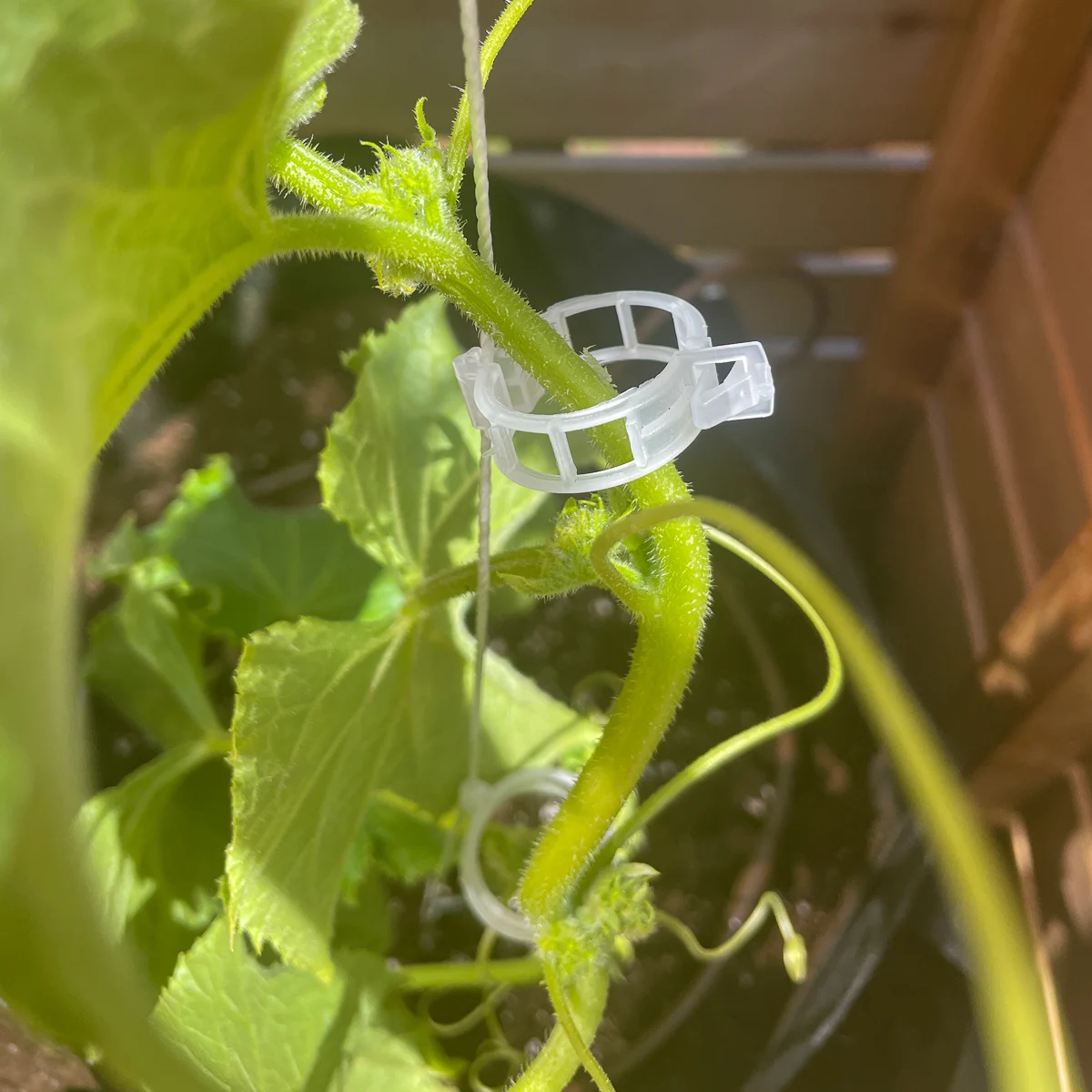
Continue clipping the stem to the string as the plant grows. This cucumber took off like a rocket and grew two feet and is covered with flowers in just a few weeks! It's obviously quite happy in its grow bag.
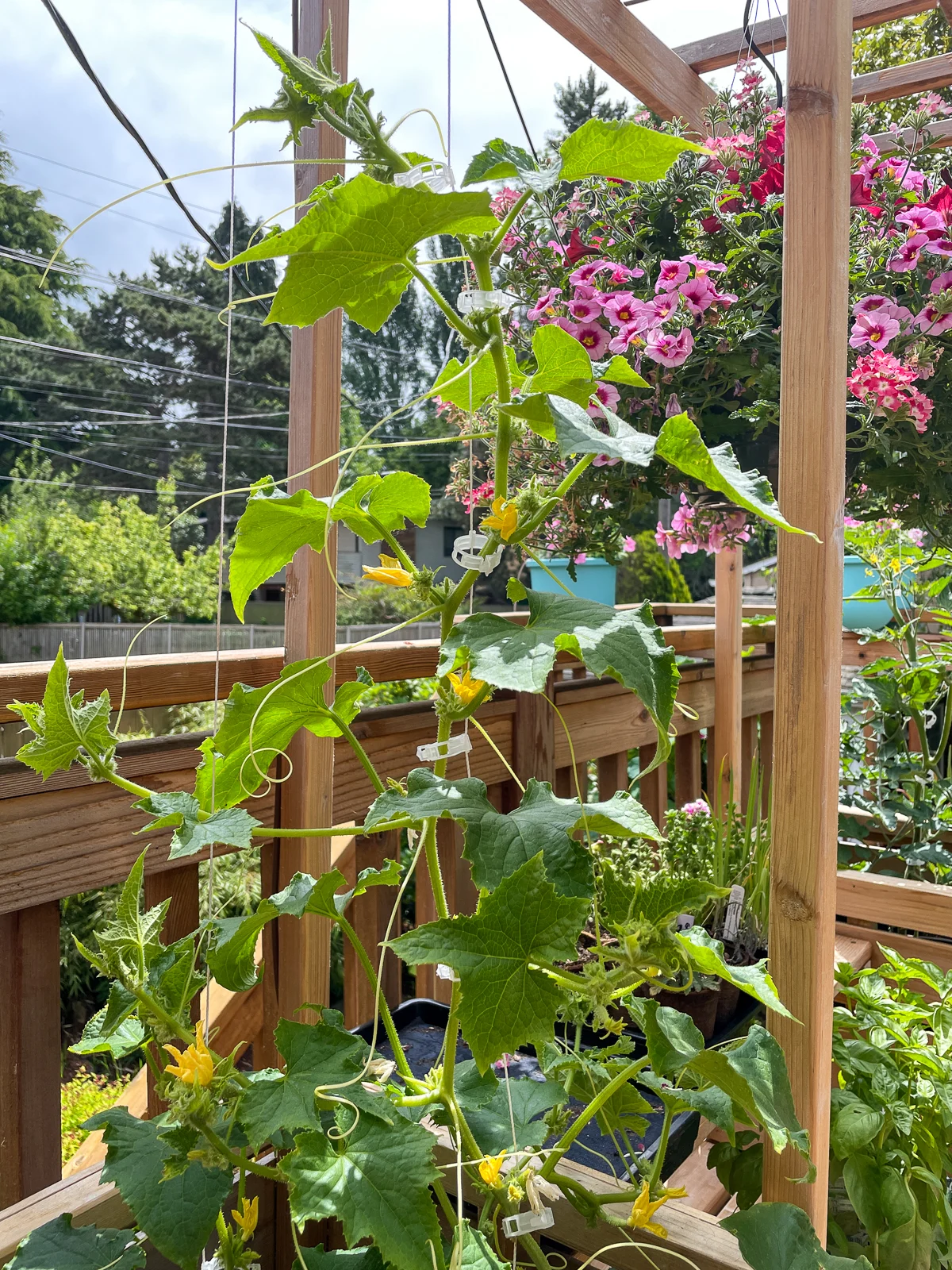
Harvesting
Cucumber plants typically produce fruit over an eight to ten week period in summer. They mature quickly and can get over-ripe if you don’t pick them regularly. Harvesting triggers the plant to go on flowering and making more fruit for a longer time.
You can see that my plant is already starting to set fruit! Check out those tiny little cucumbers!
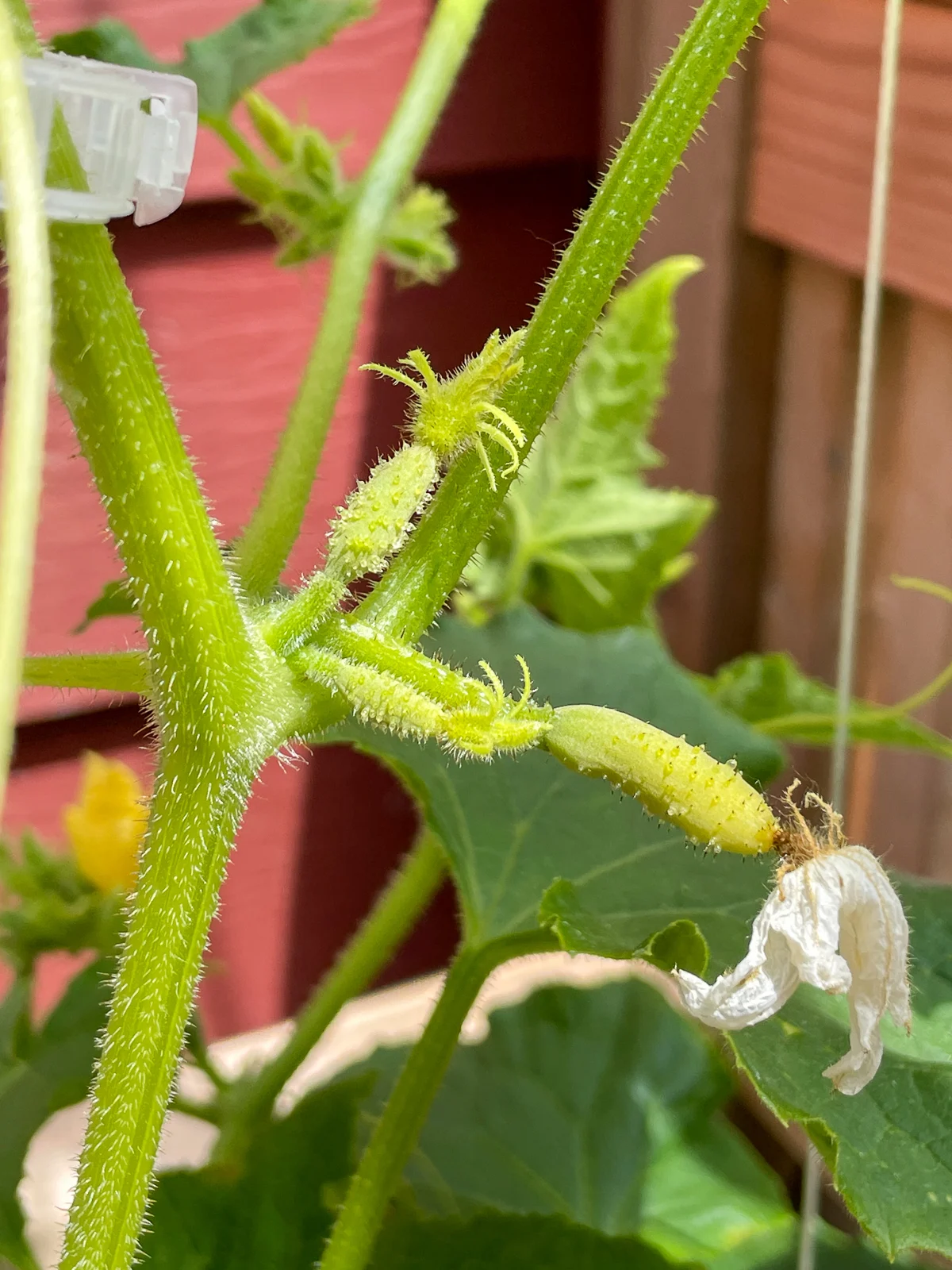
Check the variety you have to see how big the mature fruit is supposed to be. Most varieties are best picked when they're about 6 to 8 inches long.
The color should be a vibrant green, not yellowing, which can be a sign of over-ripeness. Your cucumbers should feel firm to the touch, not soft or wrinkly. It's better to harvest a little early than too late. Over-ripe cucumbers can be tough and bitter.

To harvest your cucumbers, use a sharp pair of garden shears or a knife. Do not pull or twist the cucumber off the plant as this can damage both the fruit and the plant. Cut the stem about ¼ inch above the fruit.
Troubleshooting common issues
There's nothing worse than putting all this effort into planting cucumbers in grow bags and not getting any fruit! Here are a few common issues you might encounter and their solutions:
Yellowing leaves: This might be due to overwatering or a nitrogen deficiency. Check your watering regimen, and consider adding a nitrogen-rich fertilizer.
No fruit after flowering: This could be due to a lack of pollination. If you don't see many bees around, you can hand-pollinate the flowers using a small paintbrush.
Wilted plants: This could be a sign of bacterial wilt. If you notice this, remove the affected plant immediately to prevent the disease from spreading.
Pests: The most common pests you'll encounter with cucumbers include aphids, cucumber beetles, and slugs. To deal with these pests, try spraying your plants with a mild solution of water and dish soap. For a more stubborn infestation, you may need to consider using a pesticide that is safe for edible plants.
Diseases: Cucumbers can also fall prey to several diseases like powdery mildew and bacterial wilt. To prevent these diseases, ensure your cucumbers are getting enough sun and air circulation. If your plants do get sick, remove and dispose of the affected parts immediately to prevent the disease from spreading.
No matter how big or small your garden, you can grow your own cucumbers with grow bags. So go ahead, get your hands dirty, and enjoy your harvest!
Check out these other vegetable growing tutorials!

